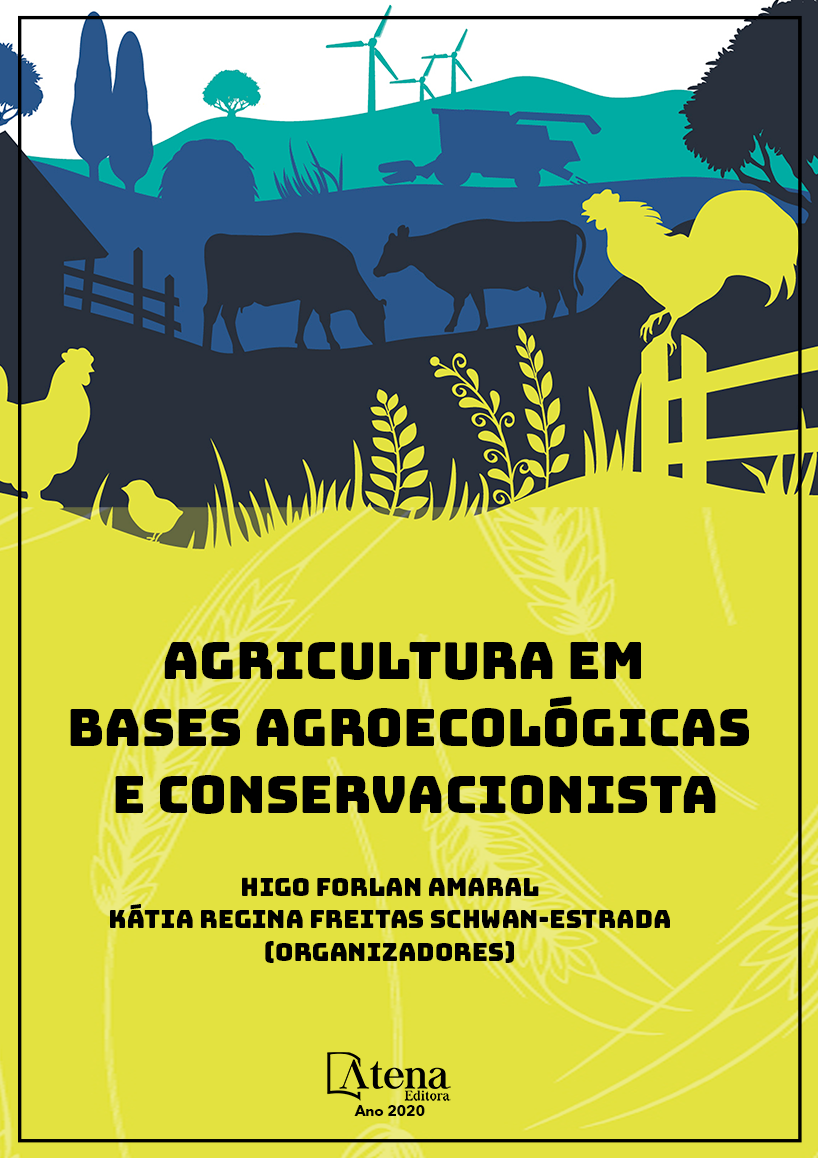
USO DE Lachancea thermotolerans CCMA 0763 NO CONTROLE DE OÍDIO E NA INDUÇÃO DE GLICEOLINA EM SOJA
O fungo Microsphaera diffusa,
agente etiológico do oídio da soja pode
ocasionar perdas de até 40% na produção.
O controle desta doença é difícil e em soja
sob cultivo agroecológico opta-se por utilizar
produtos naturais. Este trabalho teve como
objetivo avaliar o uso da levedura Lachancea
thermotolerans no controle da doença, na
indução da gliceolina e o efeito dos tratamentos
sobre a produção de clorofila a e b. As sementes
de soja cultivar NA 5909 foram semeadas em
vasos contendo mistura solo: areia em casa
de vegetação. Após 32 dias da semeadura,
com o aparecimento dos primeiros sintomas da
doença, iniciou-se aplicação dos tratamentos
(células de L. thermotolerans; mix (células +
filtrado); filtrado; leite in natura e caldo de cana,
todos na concentração de 10%) bem como a
avaliação de severidade da doença. Com os
dados obtidos, calculou-se a área abaixo da
curva de progresso da doença (AACPD) sendo
que o tratamento com leite in natura o que
apresentou a menor AACPD. A produção da
fitoalexina gliceolina foi analisada no bioensaio
em cotilédones da soja tratados com os
diferentes tratamentos e verificou-se que todos
os tratamentos foram eficientes em produzir
gliceolina nos cotilédones. Foi possível verificar
que os tratamentos não alteraram a produção
de clorofila a e apenas os tratamentos de células
e filtrado de L. thermotolerans, promoveram
incremento na produção de clorofila b. Assim,
conclui-se que o leite in natura e as células
leveduriformes bem como o filtrado das células,
podem ser adicionados ao manejo integrado
para controle de oídio da soja.
USO DE Lachancea thermotolerans CCMA 0763 NO CONTROLE DE OÍDIO E NA INDUÇÃO DE GLICEOLINA EM SOJA
-
DOI: 10.22533/at.ed.07220210210
-
Palavras-chave: fitoalexina, levedura, leite in natura
-
Keywords: phytoalexin, yeast, raw milk
-
Abstract:
Microsphaera diffusa, the etiological agent of soybean powdery mildew
can lead to losses of up to 40% in production. The control of this disease is difficult
and in soybeans under agroecological cultivation uses natural products. The objective
of this work was to evaluate the use of the yeast Lachancea thermotolerans in the
control of the disease, the induction of glyceolin and the effect of the treatments on
chlorophyll a and b production. The seeds of soybean NA 5909 were sown in pots
containing soil: sand mixture in a greenhouse. After 32 days of sowing, with the onset
of the first symptoms of the disease, the treatment was started (L. thermotolerans;
mix cells + filtrate), filtered, raw milk and cane juice, all at a concentration of 10%) as
well as the assessment of disease severity. With the obtained data, the area under the
disease progress curve (AUDPC) was calculated, being the treatment with raw milk
that presented the lowest AUDPC. To verify the production of phytoalexin glyceolin, a
bioassay was performed on soybean cotyledons treated with the different treatments
and it was verified that all the treatments were efficient in producing glyceolin in the
cotyledons. In relation to chlorophyll production, it was possible to verify that the
treatments did not altered the production of chlorophyll a and only the treatments of cells
and filtrate of L. thermotolerans, promoted an increase in the production of chlorophyll
b in soybean. Thus, it is concluded that raw milk and yeast cells as well as cell filtration
can be added to the integrated management to control soybean powdery mildew.
-
Número de páginas: 15
- Luís Henrique Brambilla Alves
- Bruna Broti Rissato
- Rosane Freitas Schwa
- Kátia Regina Freitas Schwan-Estrada
- Bruno


